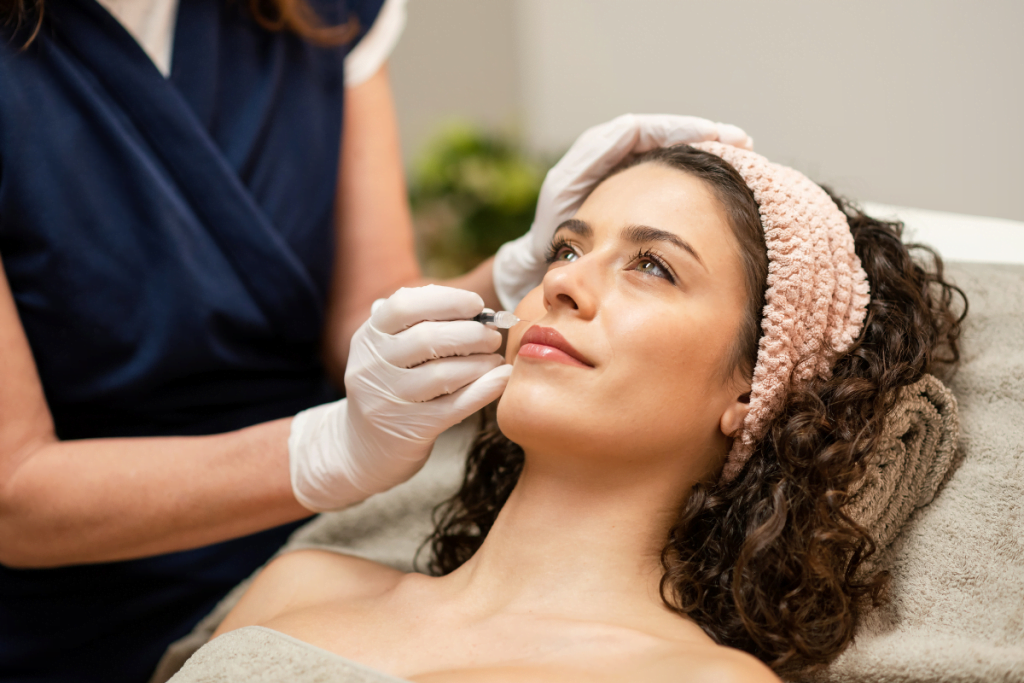Dermal fillers have become a popular cosmetic treatment to enhance facial aesthetics, offering solutions to wrinkles, volume loss, and scarring. As more patients opt for these treatments, understanding the essential aspects of post-treatment care is crucial for medical practitioners. Proper post-treatment care ensures optimal results and minimizes potential complications, increasing patient satisfaction. This article delves into the best practices for post-treatment care, including tips for maintaining the effects of fillers, addressing common concerns, and optimizing patient outcomes.
Maximizing the Longevity of Dermal Fillers
Post-treatment care plays a critical role in maximizing the lifespan of dermal fillers. On average, fillers can last anywhere from 6 months to 2 years, depending on the type of filler used, patient metabolism, and the treated area. To prolong the effects, patients should be advised to avoid excessive facial movement, minimize exposure to direct sunlight, and maintain proper hydration. Regular follow-up appointments allow practitioners to assess filler integration and suggest touch-ups as needed, ensuring that patients enjoy the full potential of their treatment.
Choosing the Right Type of Dermal Filler for Individual Needs
Selecting the suitable dermal filler is essential for achieving optimal results, and this decision should be tailored to each patient’s specific needs. Hyaluronic acid fillers, such as Juvederm and Restylane, are famous for their versatility and immediate results. In contrast, calcium hydroxylapatite fillers like Radiesse are favored for their ability to provide structural support and stimulate collagen production. Thicker and longer-lasting fillers are recommended for patients with deep wrinkles or volume loss, particularly those over 50. A comprehensive understanding of the various filler types helps practitioners create individualized treatment plans that address specific aesthetic goals.
Addressing Aging Concerns: The Best Dermal Fillers for Mature Skin
Patients over 50 often seek dermal fillers to combat the effects of aging, such as sagging skin and deep wrinkles. Firmer fillers like Radiesse or advanced formulations of hyaluronic acid are ideal for this demographic, providing robust support and lasting results. Combining dermal fillers with other rejuvenation techniques, such as laser treatments or skincare regimens, can enhance results. Educating patients about the best dermal fillers for their age group and skin condition helps them make informed decisions, leading to higher satisfaction with the outcomes.
Combining Dermal Fillers and Botox for Enhanced Results
While dermal fillers and Botox are often discussed in tandem, they serve distinct functions in cosmetic medicine. Fillers add volume to smooth out static wrinkles and contour facial features, whereas Botox temporarily relaxes the muscles responsible for dynamic wrinkles, such as frown lines and crow’s feet. Using a combination approach, commonly called a “liquid facelift,” allows practitioners to target multiple signs of aging in one treatment plan. This synergy can achieve more balanced and comprehensive facial rejuvenation, providing patients with natural-looking results.
Navigating Permanent and Semi-Permanent Dermal Fillers
Dermal fillers come in permanent and semi-permanent forms, each offering distinct benefits and drawbacks. Permanent fillers, such as polymethyl methacrylate (PMMA), provide long-term results but carry a higher risk of complications like granuloma formation. On the other hand, semi-permanent fillers offer more flexibility as they gradually dissolve and can be adjusted with touch-ups or reversed if needed.
Utilizing Dermal Fillers for Acne Scars Correction
Beyond wrinkle reduction and volume enhancement, dermal fillers are an effective solution for treating atrophic acne scars. By elevating depressed scars to match the surrounding skin level, fillers such as hyaluronic acid and collagen-stimulating products provide immediate improvement and smoother skin texture. Dermal fillers for acne scars offer a minimally invasive alternative to more aggressive procedures like laser resurfacing or surgery, making it a preferred option for patients seeking fast and visible results with minimal downtime.
Frequently Asked Questions (FAQs)
How long do dermal fillers last?
Dermal fillers typically last between 6 months and two years, depending on the type used, treatment area, and patient-specific factors. Hyaluronic acid fillers, like Juvederm and Restylane, are some of the most commonly used and generally last between 6 and 18 months.
Are there specific fillers recommended for patients over 50?
Yes, firmer and more volumizing fillers such as Radiesse or thicker hyaluronic acid formulations are often recommended for patients over 50 to address deeper wrinkles and volume loss.
Is it safe to combine dermal fillers and Botox?
Combining fillers and Botox is a safe and effective strategy to address static and dynamic wrinkles, offering a more comprehensive facial rejuvenation.
Do dermal fillers cause cancer?
There is no evidence linking dermal fillers to cancer. Fillers, particularly hyaluronic acid-based ones, are safe when trained professionals use approved products. The safety of dermal fillers is primarily attributed to rigorous clinical testing and regulation by agencies such as the U.S. Food and Drug Administration (FDA) and the European Medicines Agency (EMA).
What are the differences between permanent and semi-permanent fillers?
Permanent fillers, like PMMA, provide long-lasting results but carry higher risks, including potential complications that may require surgical correction. They are less forgiving if issues arise, making them suitable only for those committed to permanent changes. Semi-permanent fillers dissolve over time, typically lasting one to two years, offering more flexibility and safety. They can be adjusted or reversed, making them a safer and more adaptable option for patients seeking temporary yet effective results.






